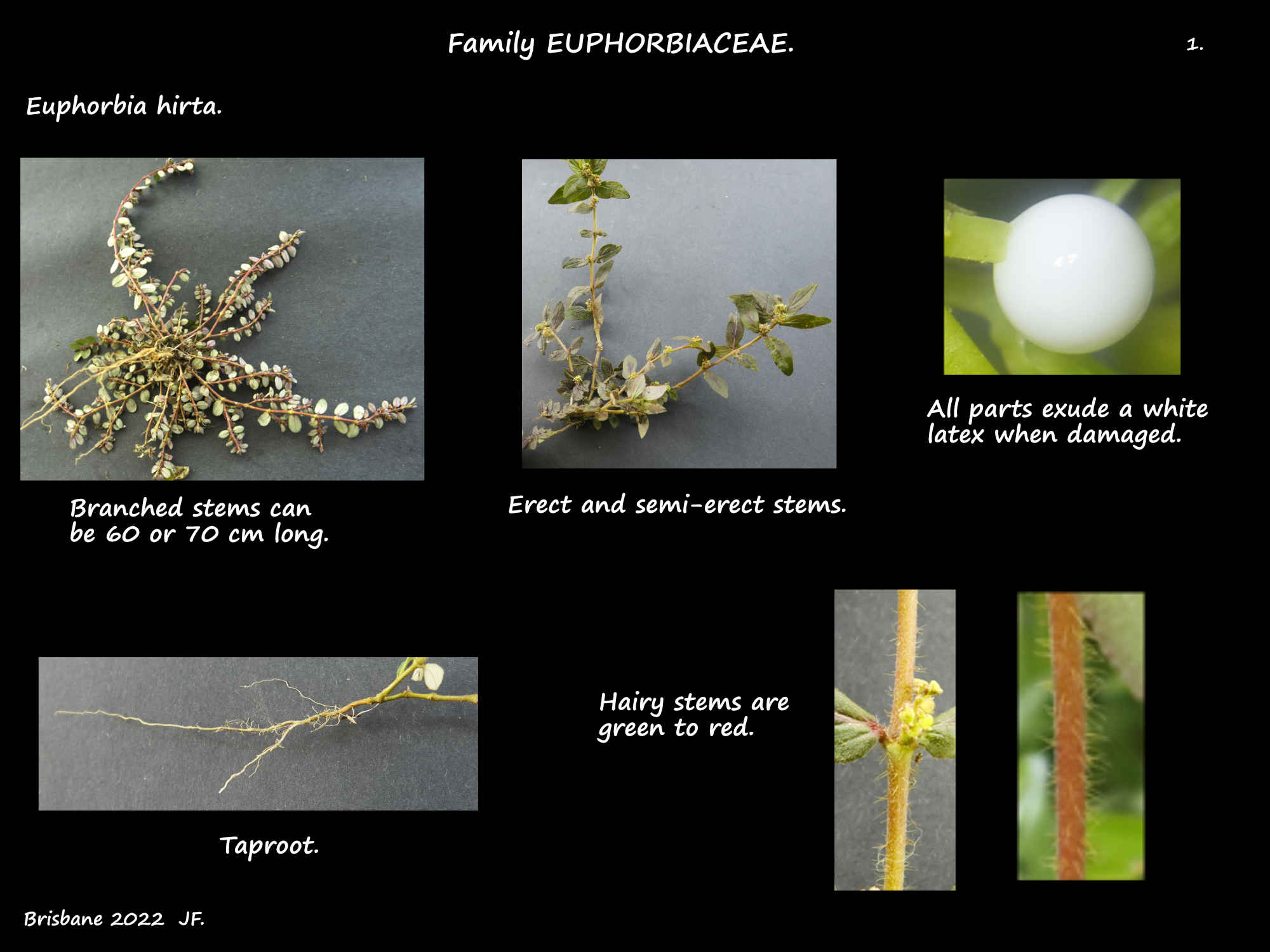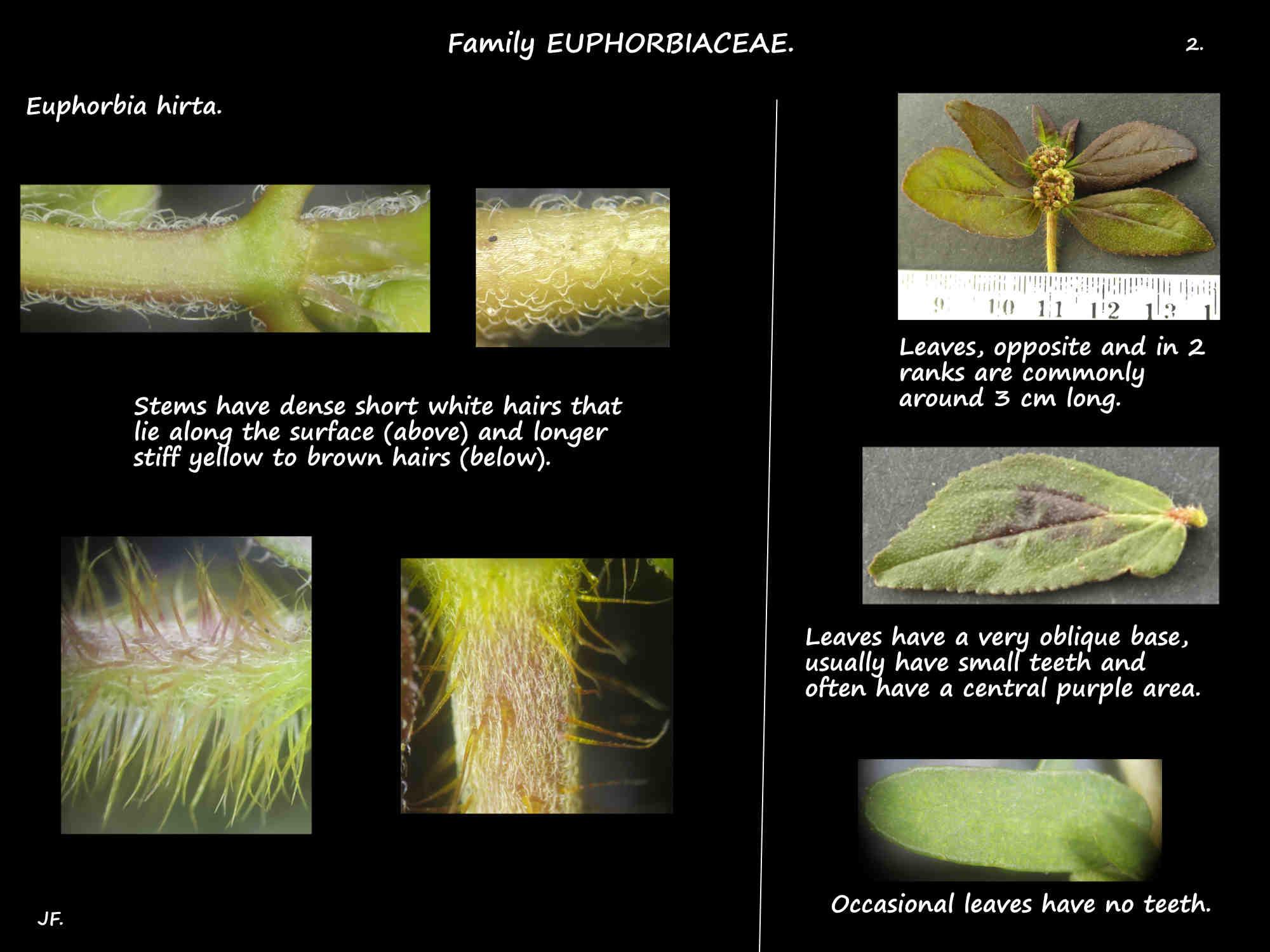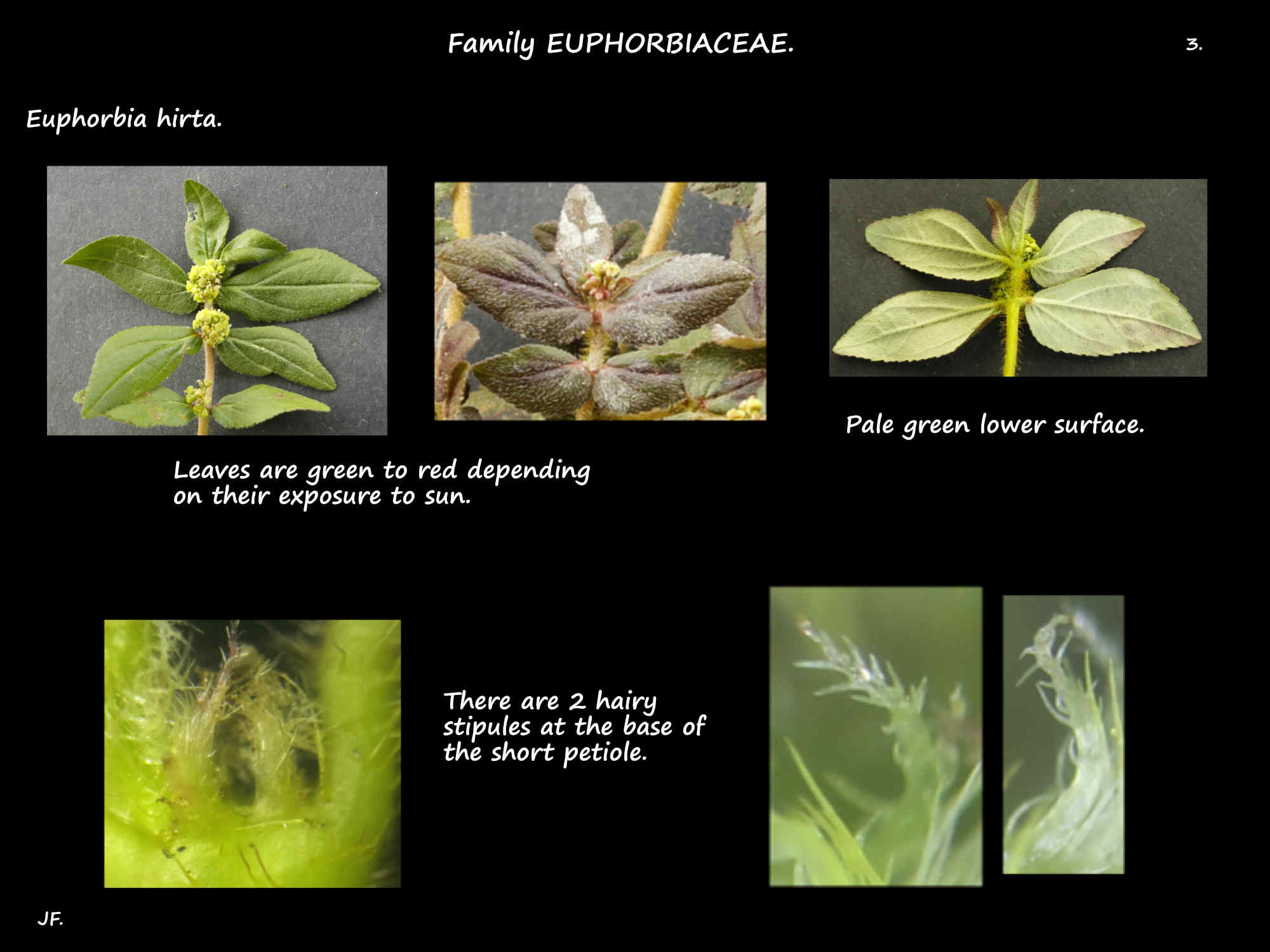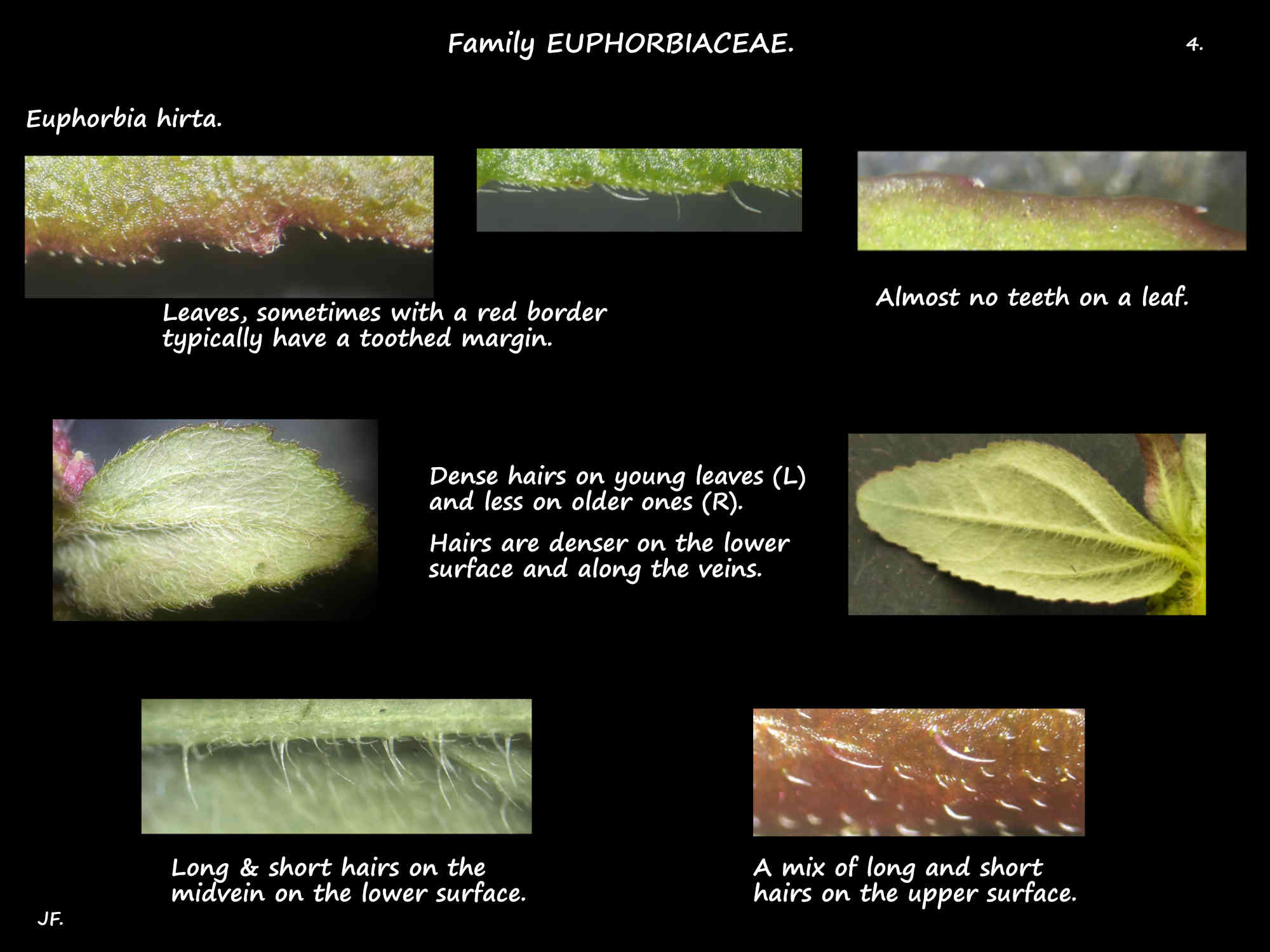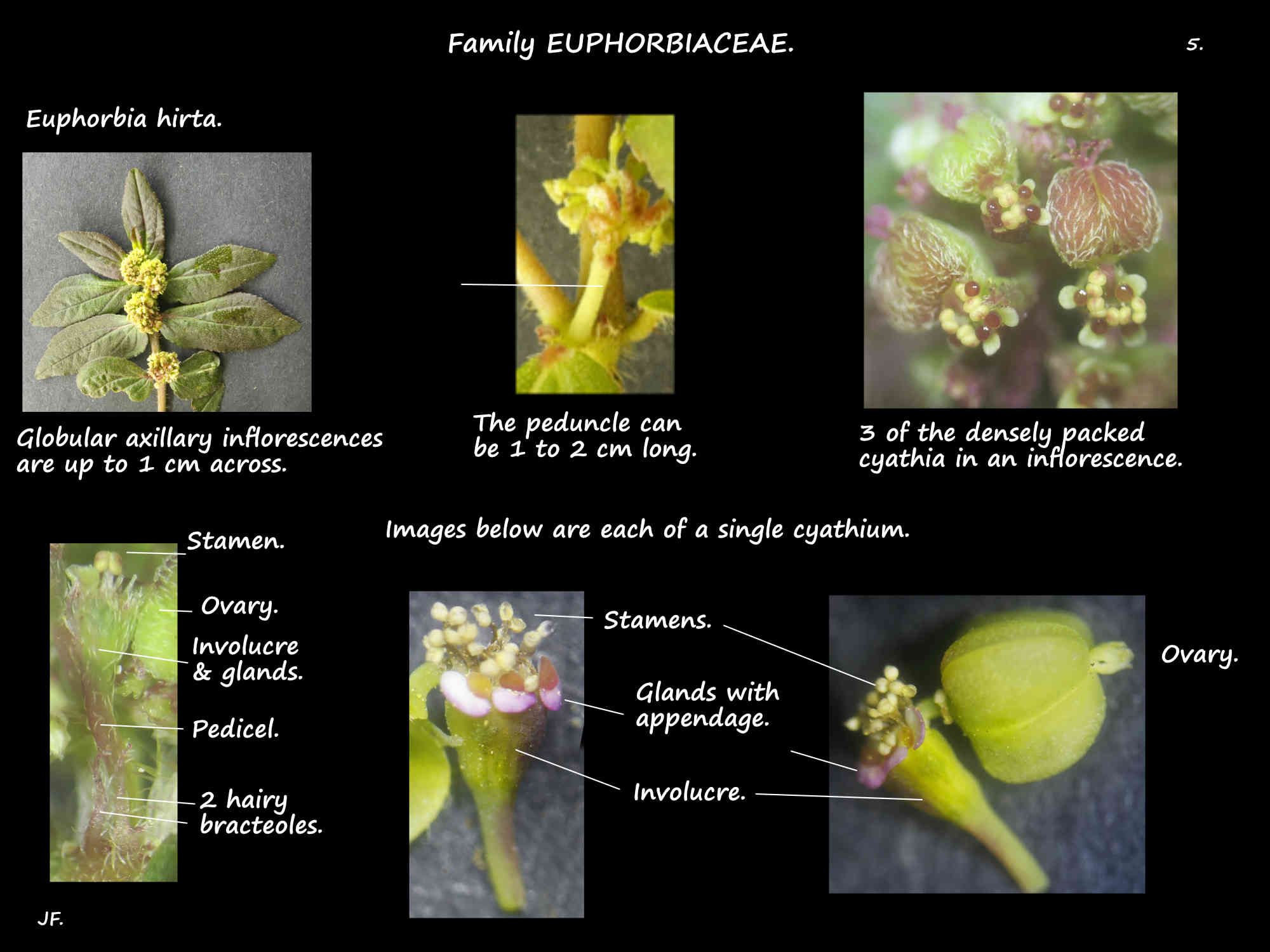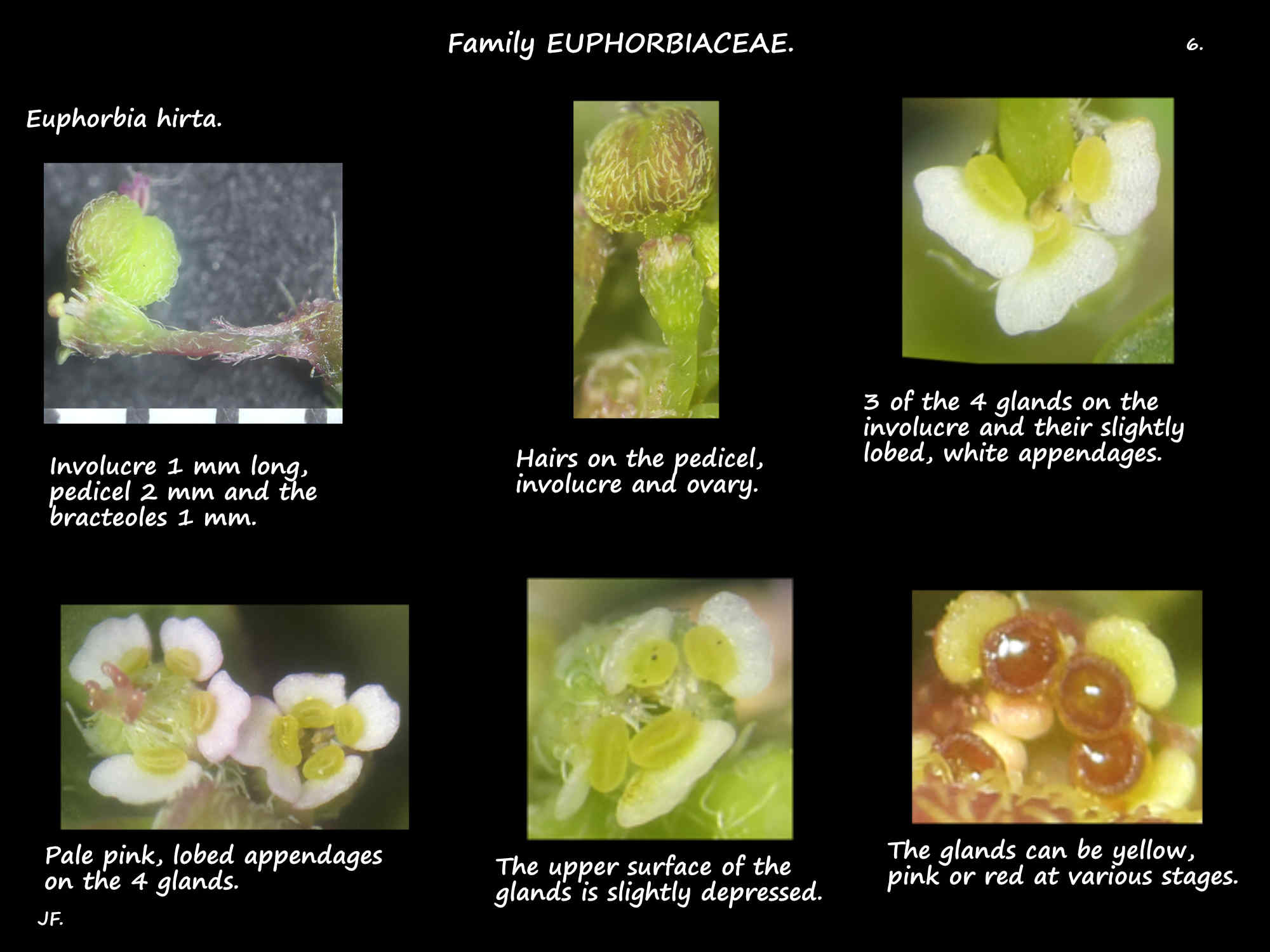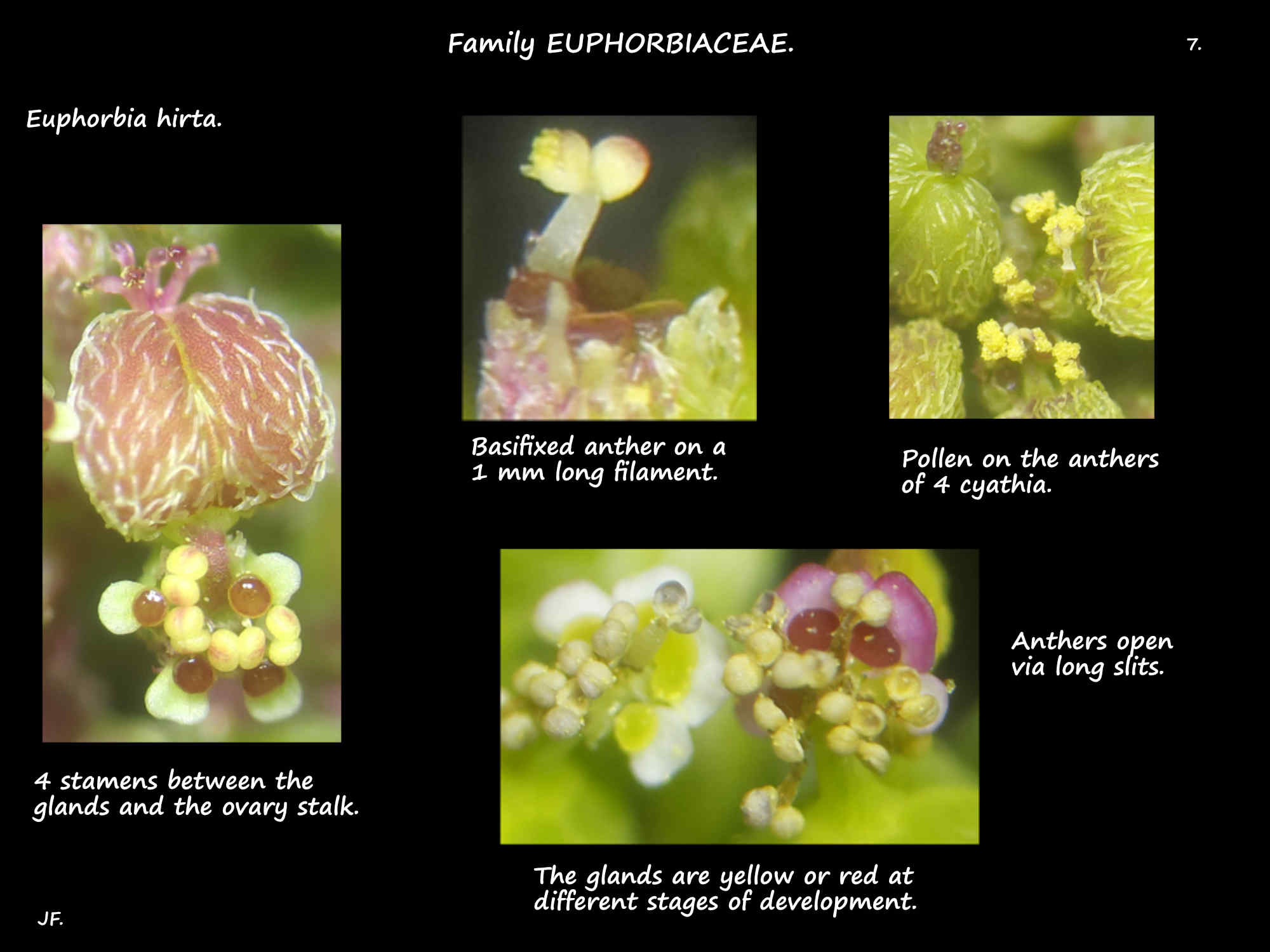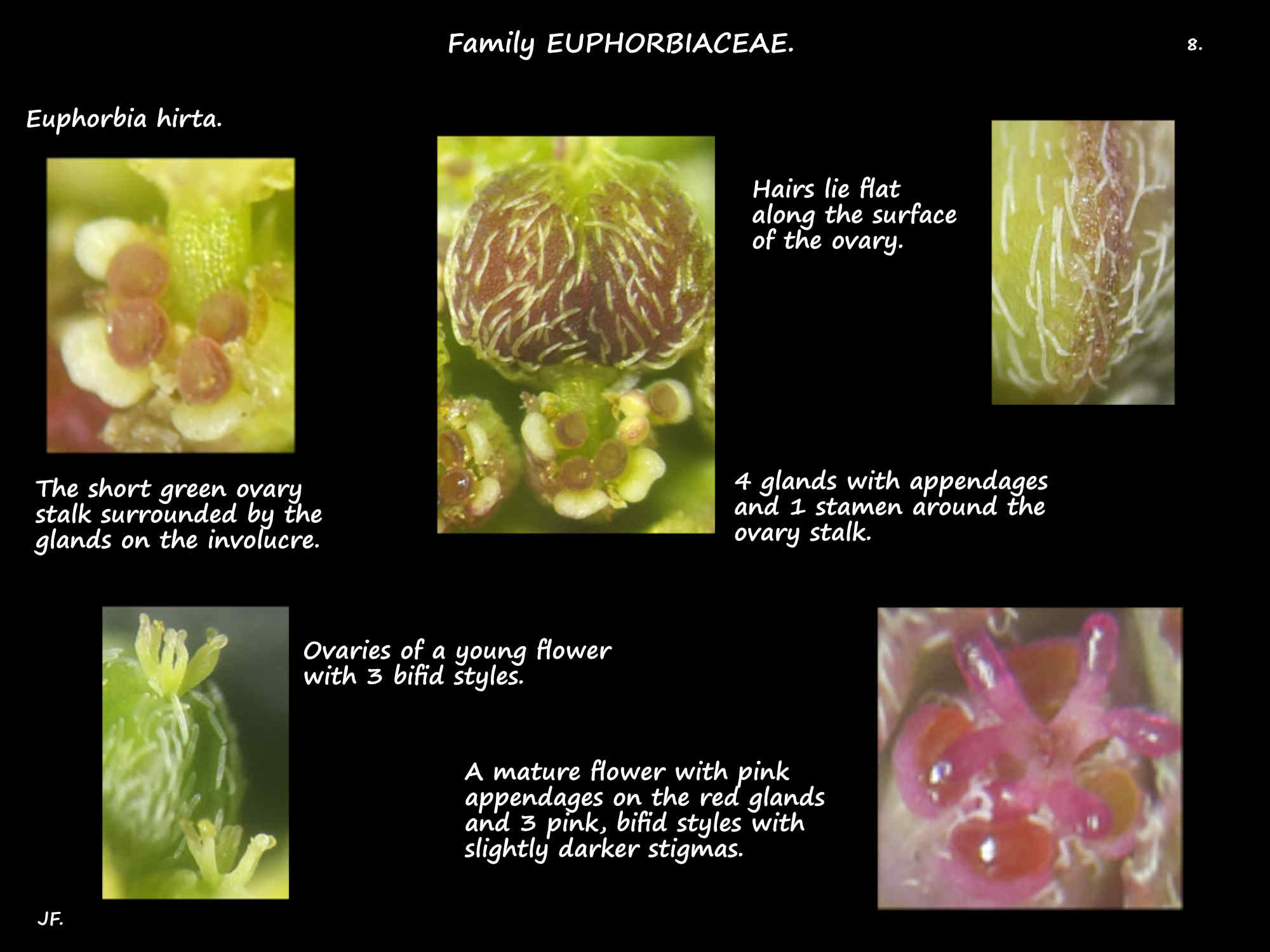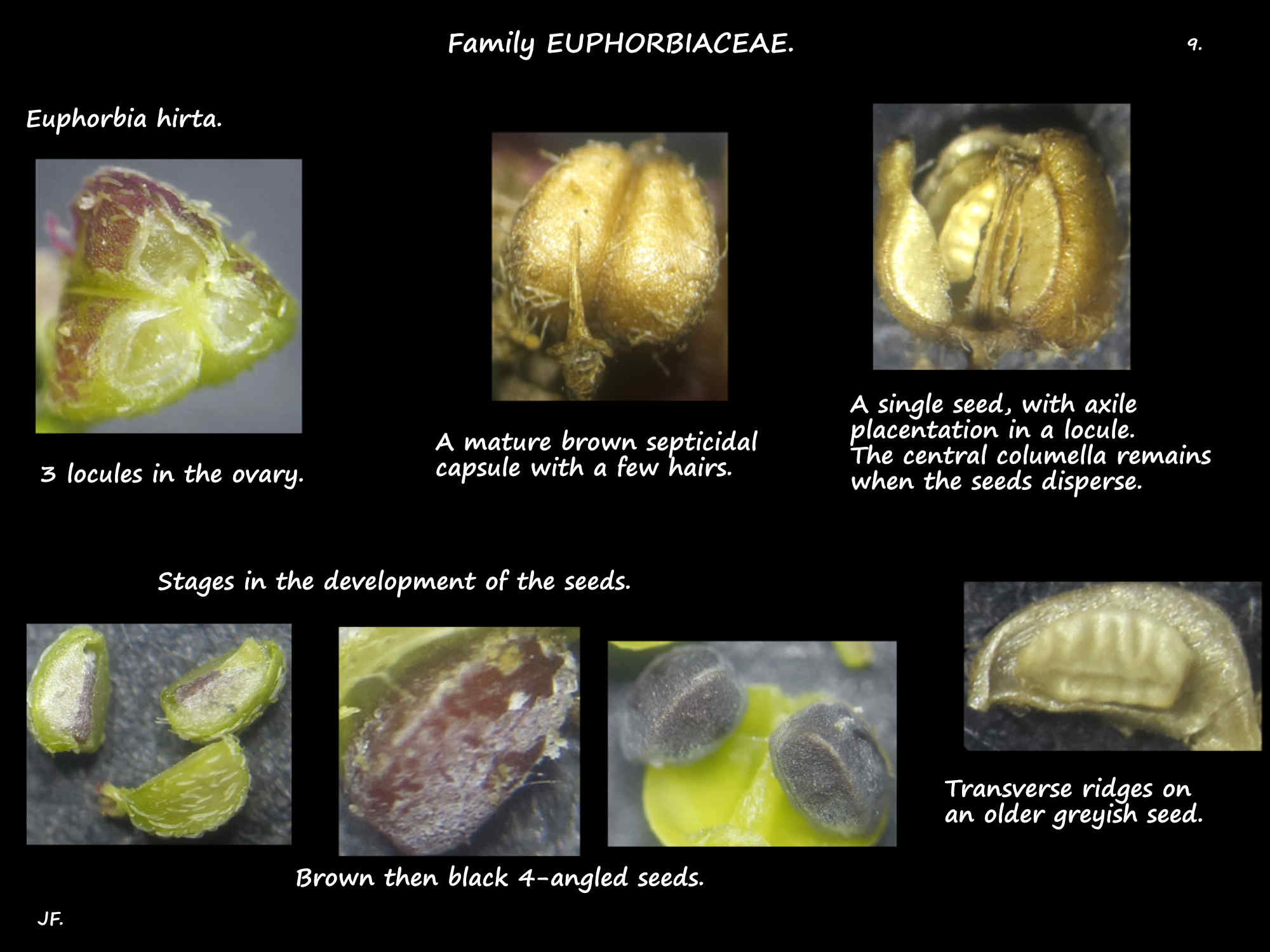Euphorbia hirta.
This species has many common names including Asthma Plant, Hairy Spurge, Red Euphorbia and Snakeweed.
From the Americas the weed is widely naturalised in Queensland.
They are annual herbs with sparsely branching stems growing from a taproot.
The stems are mostly erect or semi-erect with only a few prostrate ones.
Up to around 60 cm long they are green &/or red.
Stems are fairly densely covered in very short white hairs that lie along the surface.
There are also scattered to dense 1.5 mm long brown or yellowish hairs.
Stems, and other parts exude a white latex when damaged.
The leaves are opposite, in 2 ranks (distichous) and on petioles up to 3.5 mm long.
At the base of the petiole are 2 hairy stipules around 2 mm long that often fall off.
Typically linear they may be triangular and entire or divided into up to 4 parts.
As well as soft hairs they also have longer straight stiff ones.
The ovate to lanceolate or elliptic blades are up to 3 (5) cm long and 1.5 or 2 cm wide.
They have a pointed tip and a very oblique base.
The edges may be smooth but usually have small teeth.
The leaves are dark green to reddish mainly depending on the amount of sun they get.
They often have a purplish area in the centre of the upper surface and the lower surface is paler.
The hairs on the petiole and blade are most dense on the lower surface and on young leaves.
Sometimes the upper surface of adult leaves has almost none.
The white, greenish or yellowish axillary inflorescences are mostly towards the ends of the stems.
Each globular inflorescence, up to 1 cm across is on a peduncle around 1 to 2 cm long.
There may be 1 or 2 small leaf-like bracts up to 1 cm long at the base of the peduncle.
Each dense inflorescence consists of many cyathia on stalks a mm or so long with bracts up to 1 mm long at the base.
A cyathium consists of an involucre of bracts that has glands with appendages and it holds the numerous male
flowers around a central female flower.
A cyathium has a green and purplish obconic or cup-shaped involucre of 4 or 5 basally fused bracts.
The involucre, up to 1 cm long has 4 teeth on the rim and is covered in stiff white hairs.
On the involucral rim and alternating with the teeth are 4 glands under 0.5 mm long.
The pink or red glands are elliptic, oblong or kidney-shaped with a slightly sunken centre.
Projecting outwards from under the glands are white to pink appendages.
These transversely oblong or elliptic appendages are up to 0.7 mm long.
None of the flowers have sepals or petals although the glands on the involucre are petal-like.
The 2 to 5 (8) male or staminate flowers are reduced to a 1 mm long stamen and tiny linear bracteoles.
The anthers are basifixed and open via long slits.
The single female or pistillate flower is on a short stalk with the perianth reduced to a thin rim at the top.
The 1 mm long angled green ovary has 3 locules each with 1 ovule with axile placentation.
It is covered in stiff white hairs that lie flat on the surface.
There are 3 styles from 0.2 to 0.5 mm long that split into two arms with the purplish stigmas.
The fruit are 3-lobed septicidal capsules about 1.5 mm across with yellowish hairs.
The reddish-brown then grey angled seeds are up to 1 mm long.
They have a wrinkled surface and transverse ribs.
J.F.
